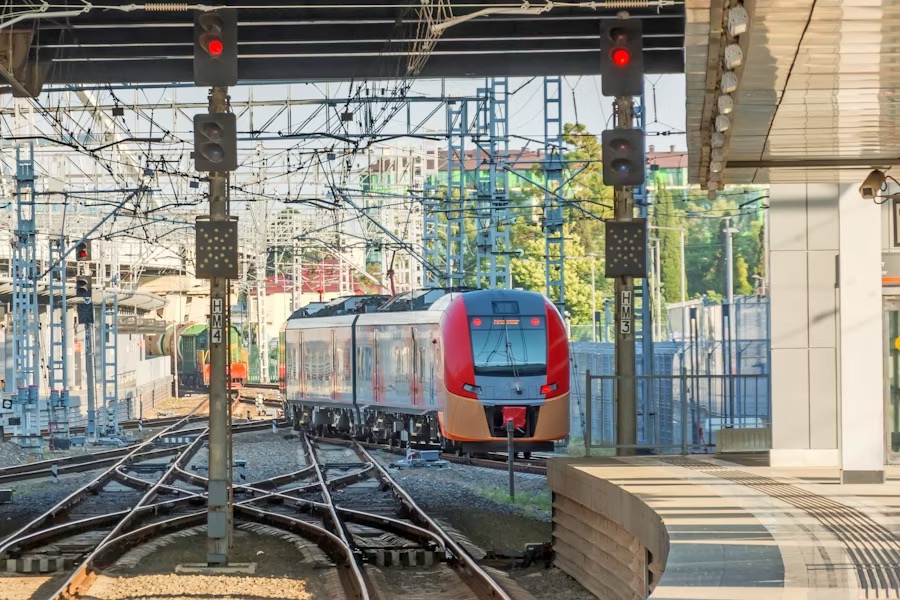As a frequent traveler to Europe, I get asked about the little details all the time — from packing and navigating public transport to handling money and staying safe. Over the years, I’ve learned a few tricks that make life on the road smoother, and I’ve put together this list to share what’s worked best for me. These practical travel tips for Europe can help make any trip easier, less stressful, and more enjoyable. And if you have your own tried-and-true tips, I’d love to hear them!
Before You Go: Practical Travel Tips for Europe
- AirTag or Tracker: Place one in your purse, backpack, & checked luggage for peace of mind. Don’t forget to add the app to your phone for tracking.
- Photocopies: Photograph your passport, driver’s license, & credit cards. Keep one copy in the cloud & one printed copy at home or in the hotel safe
- Travel Insurance: Assure that your policy covers medical care, trip delays, and lost or stolen belongings — it can save both stress and money if something unexpected happens abroad.
- International Phone Plan or eSIM: Make sure you sign up for the international plan with your phone company, even if you don’t plan on using it — it’s good to have just in case. If you’re mainly using Wi-Fi, keep your phone on airplane mode. Wi-Fi is easily available in most restaurants, coffee shops, and hotels across Europe, making it a great free option. For reliable mobile data and maps while you are out and about, consider using a European eSIM (like Airalo or Holafly). However, your phone must be unlocked to use an eSIM. These eSIM options are often cheaper than most carrier’s international plans. We’ve compared the best eSims here.
- Offline Maps: Download offline Google Maps for each city before arrival if you plan to use only WI-Fi.
- Plug Adapters: Bring a universal European adapter (Type C/E/F) and a multi-port charger. Remember that adapters only change the plug shape, while converters change the electrical voltage. Most modern electronics like phones, tablets, and laptops are dual voltage, so you typically won’t need a converter. If you use the wrong voltage, you can permanently damage your appliances — so it’s best to bring only dual-voltage items whenever possible.

Money & Security in Europe
- Carry Two Credit Cards: Use one daily and keep a backup in your hotel safe in case of theft or if one card is declined. AMEX is not as widely accepted as VISA and Mastercard.
- No Foreign Transaction Fee Cards: Check cards before traveling to assure that they don’t charge a fee for International purchases — and always charge in local currency (not USD) to avoid inflated exchange rates.
- Hotel Safe: Store extra cards, cash, & passports in your room safe. To avoid forgetting items, place something essential (like your keys or purse) inside as a reminder.
- ATM Tips: Use only ATMs that are inside or directly attached to banks for better security. When the machine asks if you want to “convert to USD,” always decline and choose “local currency (EUR).” This ensures your own bank sets the exchange rate — not the ATM — and helps you avoid hidden fees and poor conversion rates
- Small Cash: Keep €10–€20 handy for bathrooms, markets, or small shops that don’t accept cards. Local coins come in handy more often than you’d think.
Pickpocket Prevention
- Avoid back pockets for phones or wallets
- Men: Use front or inside jacket pockets
- Women: Use a zipped crossbody bag in front of you – preferably theft-proof.
- Pickpocketing & Distraction Theft are the biggest risks for travelers. Thieves often target crowded areas like train stations, landmarks, markets, and metros, using tactics such as bumping into you, asking for directions, or spilling something to distract while an accomplice steals wallets, phones, or valuables.

Transportation & Etiquette in Europe
Europe’s trains, buses, and taxis are efficient and simple once you understand the rules.
Trains
- Keep your voice low, especially in quiet cars
- Store luggage in racks or overhead bins, not in seats
- Platforms can change quickly — pay attention
- Most trains now use electronic or QR-code tickets; physical validation is generally not needed, but always keep your ticket handy
Taxis vs. Ride-Sharing
- In Germany and the UK, taxis are usually more reliable and most are metered. Taxis also easily accept credit cards.
- In France, Italy, and Spain, Uber or Bolt can be easier and cheaper.
Public Transport & Driving
- Move away from doors and remove backpacks during rush hours on public transportation.
- Know parking rules and low-emission zones if driving.
- Manual transmissions are very common — reserve automatic cars early if needed.
Bikes & Scooters: **Cities like Amsterdam require extra attention – and can be scary for pedestrians. 🙂 Stay alert!
- Bikes: Be very cautious around bike lanes — in many European cities, these lanes often look like sidewalks, and cyclists travel fast. It’s easy to get hit if you’re not paying attention, so always look both ways and stay clear of marked lanes when walking.
- Scooters: Scooters are common in many European cities — stay alert near curbs and crossings.

Dining & Tipping in Europe
- Tipping: 5–10% is generous; rounding up is usually fine. Do not leave money on the table — hand it directly to the server
- Pace: Meals are leisurely; enjoy the slower rhythm rather than expecting a quick turnover
- Asking for the Bill: The server will not usually bring the bill unless prompted, as it is considered rude. Simply ask for it, and they will bring it promptly. If you’re paying by credit card, the server will bring the card machine to your table so you can pay easily.
- Water: Tap water is not automatically served, so be sure to ask if you want it. Tap and Table water are usually the same. If ordering bottled water, you’ll typically be asked whether you prefer ‘still’ or ‘sparkling’.
Daily Habits & Packing
- Layer Clothing: Weather can shift quickly, especially in northern Europe. Consider a capsule wardrobe with a base color like black, brown, or navy, and choose pieces that mix and match easily. Bright colors are less common, so neutrals help you blend in. Avoid clothing that highlights your nationality or political affiliations — it’s best not to stand out.
- Comfortable Shoes: Sneakers or sturdy flats are essential for cobblestone streets and long walks. You’ll likely be walking a LOT, so comfortable shoes are a must.
- Dual-Voltage Hair Tools: If you bring a curling iron or straightener, make sure it’s dual voltage. Hair dryers are usually provided
- Reusable Water Bottle: Great for convenience, money saving and reducing plastic waste. We find these easy to refill in Europe.
- Travel Documents Organizer: Keep passport, tickets, reservations, and insurance info in one folder or pouch for ease.
- Pack Light: Expect lots of steps in hotels, train stations, and streets, and cobblestone roads can make pulling luggage challenging. A medium-size suitcase or carry-on is usually easier than overpacking.
- Washcloths: Many smaller local hotels don’t typically provide washcloths. If having one is important to you, bring one from home or use disposable alternatives.

European Hotel Differences
- Room Size: Many hotels, especially in city centers, have smaller rooms than typical U.S. hotels, so expect compact layouts.
- Air Conditioning & Heating: Not all hotels have central A/C, particularly smaller or historic properties. Fans are often provided if needed, and heaters are generally available in cooler months.
- Elevators: Smaller or older hotels may not have elevators, so be prepared to carry luggage up the stairs.
- Beds: European hotel beds are often smaller, typically double size rather than queen. Top sheets are rare; most beds are made with duvets.
- Power Outlets: Outlets are usually limited. Multi-port chargers or power strips are helpful. Adapters are often needed; converters only if your device isn’t dual-voltage.
- Daily Housekeeping: Some hotels do not offer daily housekeeping, or service may be limited. Tipping hotel staff is less common than in the U.S.
- Check-In / Check-Out: Check-in is typically around 3 pm, & check-out is usually mid-morning. Most hotels will hold luggage as needed.
- Amenities: Free breakfast is not always included, so it’s smart to confirm ahead of time.
Cultural Awareness: Blending In
- Lower Your Voice: Conversations tend to be quieter in public spaces. Avoid speaking loudly in museums, restaurants, or public transport
- Dress Neatly: Polished casual clothing helps you blend in and avoid standing out as a tourist
- Learn Basic Phrases in the Local Language: Simple greetings and polite words go a long way in daily interactions (Please, Thank you, Good morning, Good evening)
- Greet Shopkeepers: Always say hello when entering and goodbye when leaving shops, cafes, or markets.
- Patience: Service is slower by design; embrace the relaxed pace and enjoy the moment.
- Flexibility: Strikes, demonstrations, or delays can happen — have backup plans for trains or flights.
- Discretion: Avoid loud discussions about money, politics, or personal topics in public spaces.
Bonus Travel Smarts
- VAT Refunds: Save receipts for larger purchases to claim tax refunds at the airport
- Travel Apps: Google Translate (offline mode), Citymapper for public transport, XE or Wise for currency conversion
- Emergency Numbers: Europe-wide: 112; UK: 999
Conclusion
Hopefully these practical travel tips for Europe will help you travel with confidence and enjoy your time abroad. Over the years, I’ve learned that small details can make a big difference – and we’ve shared the things we wish we had known when starting out. If you have any tips or tricks that have worked well for you, we would love to hear them. It’s always fun to swap ideas with fellow travelers.
See Also:

